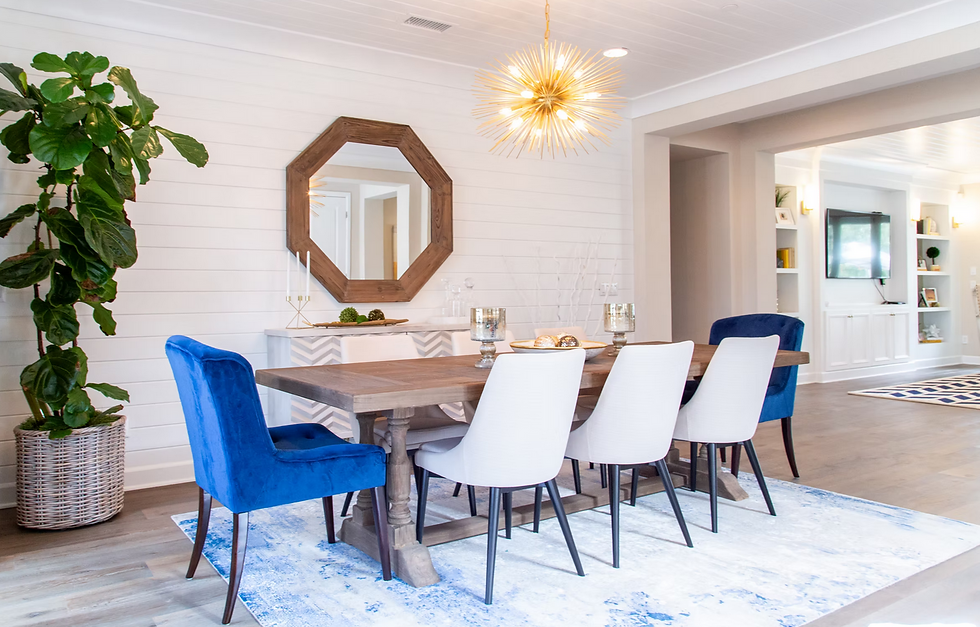Embracing Vibrancy: Incorporating Non-Neutral Colors in Modern Design
- Vision Interiors
- Aug 21, 2023
- 2 min read

Modern design has long been associated with a palette of neutral tones, clean lines, and minimalistic aesthetics. However, the notion that modern design must exclusively feature neutrals is a misconception. In fact, incorporating non-neutral colors into modern design can add depth, personality, and a unique vibrancy to your living spaces.
In this article, we'll explore the creative ways you can infuse color into modern interiors, debunk the myth of neutrals-only design, and provide tips for achieving a balanced and harmonious color scheme.
Breaking the Neutrals-Only Stereotype
The Power of Color Psychology: Colors have a profound impact on our emotions and mood. By thoughtfully incorporating non-neutral colors, you can evoke specific feelings and create a dynamic atmosphere that resonates with your personal style and preferences.
Balancing Act: The key to successfully integrating non-neutral colors in modern design is achieving a harmonious balance. Mixing colors that complement each other while maintaining a sense of unity is crucial to preventing an overwhelming or chaotic visual effect.
Infusing Color into Modern Spaces
Statement Furniture and Accents: One of the most effective ways to introduce color is through statement furniture pieces and accents. A bold-colored sofa, vibrant artwork, or colorful throw pillows can inject life into a room without overpowering the overall design.
Color Blocking and Patterns: Color blocking, where distinct sections of a room are painted in different hues, can create a visually striking yet sophisticated look. Similarly, using patterns like geometric shapes or bold stripes in furnishings and decor can infuse energy into a space.
Creating Cohesion and Flow
Color Palette Selection: Start by selecting a color palette that resonates with your personal style and the mood you want to create. Choose a dominant color and complement it with secondary and accent colors to achieve a cohesive and balanced scheme.
Connectivity Across Spaces: To ensure a seamless flow between rooms, carry over elements of the color palette from one space to another. This connection enhances the sense of unity throughout your home.
Harmony in Contrasts
Subtle Accents in a Neutral Setting: If you prefer a predominantly neutral background, introducing pops of color through subtle accents can be equally impactful. Consider colorful vases, decorative objects, or even plants to enliven your space.
Monochromatic Playfulness: An unexpected twist on incorporating color is by utilizing a monochromatic palette with varying shades of a single color. This approach adds depth and complexity to the design while maintaining a sense of minimalism.
Conclusion: Embrace the Spectrum
Incorporating non-neutral colors into modern design is an opportunity to break free from convention and infuse your living spaces with your unique personality and style. By thoughtfully selecting a color palette, strategically placing statement pieces, and achieving harmony through balance, you can create interiors that are visually captivating and emotionally resonant.
Remember, modern design is about embracing simplicity, functionality, and innovation, and introducing non-neutral colors allows you to push the boundaries and create a space that is truly one-of-a-kind. So go ahead, explore the spectrum of colors, and let your creativity shine through in every corner of your modern home.




Comments